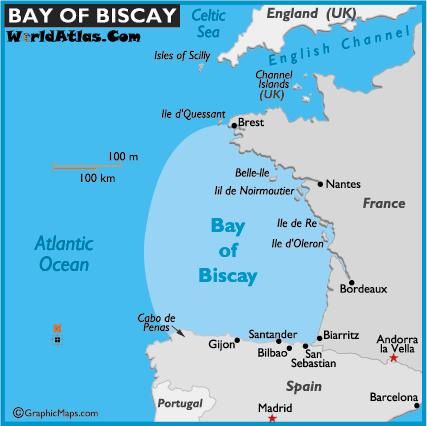¿Don Quijote or Sancho Panza?
Like Gilligan’s Island fans trying to decide between Ginger and Mary Ann, visitors to Alcalá de Henares have to decide between their two favorite characters in Cervantes’s Don Quijote de la Mancha. Do you prefer the Don himself, the delusional would-be knight errant, or Sancho, his hapless but willing squire? Visitors can register their vote by choosing where to sit on the bench outside Cervantes’s childhood home, now a charming museum. You can see my vote below.
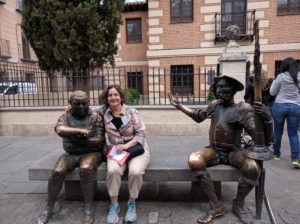
Since Alcalá de Henares is a major stop on the Camino del Castellano, one of the inspirations for my linguistic tour of northern Spain, my companion Sue and I decided to spend a day there before leaving Madrid for Salamanca. Alcalá is known for its Cervantes connection and its university, founded at the end of the fifteenth century. Out two favorite stops were the Cervantes museum and the city’s cathedral. The museum is in Cervantes’ actual childhood home, although the furnishings and other decor are not original to the house. The curators have made a strong effort to recreate what the different parts of the house would have looked out, from the ladies’ sitting room, decked out Moorish style with carpets and low furniture, to the braziers in the middle of each room.
The cathedral stands on the spot linked in legend to the 304 C.E. martyrdom of the Santos Niños, two young brothers who declared their faith in Christ knowing that it would lead to their death. The cathedral’s crypt includes the rock on which they were supposedly beheaded, while its museum includes treasures like this priestly robe made in the Phillipines (shown below, alongside an enlarged view of one of the birds embroidered on it). The church was severely damaged during the Spanish Civil War and only repaired in the 1990s. It’s sad to think that this national treasure suffered, like so many Spaniards, from that tragic period in the nation’s history.
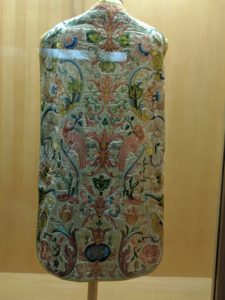

One final note: back in Madrid, we wrapped up our day with a quick visit to the Reina Sofía museum to pay homage to Picasso’s masterpiece Guernica, which I used to see in New York’s MOMA when I was a girl (it went back to Spain when Franco died). Looking at the innocent victims screaming in agony, all I could think was: Orlando.
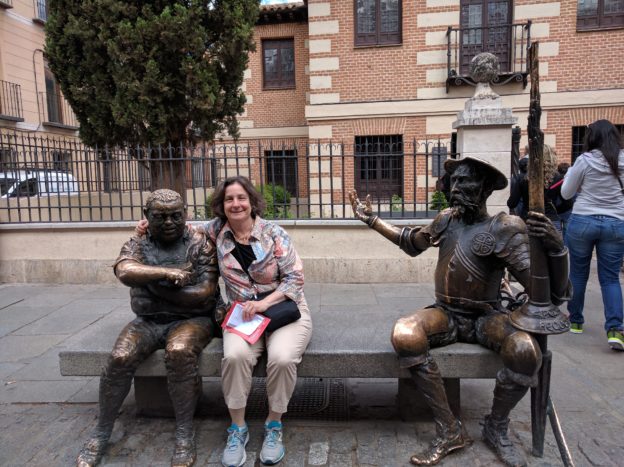
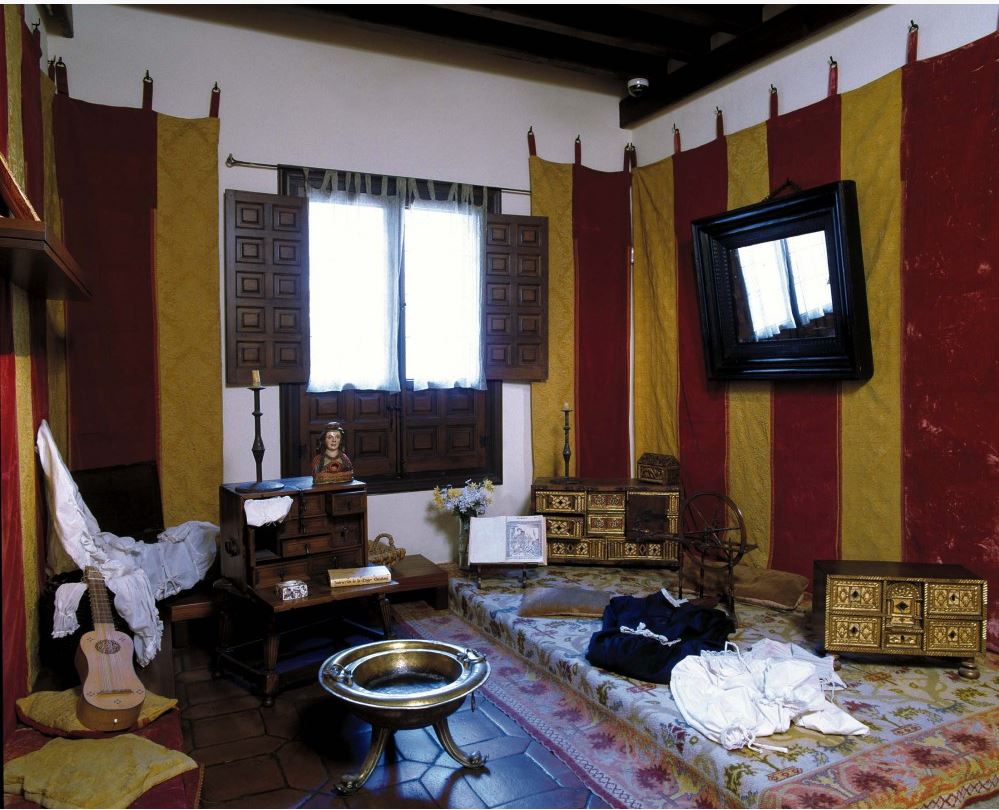
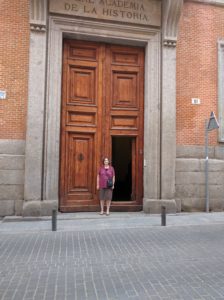
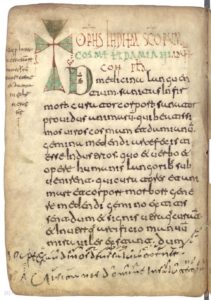
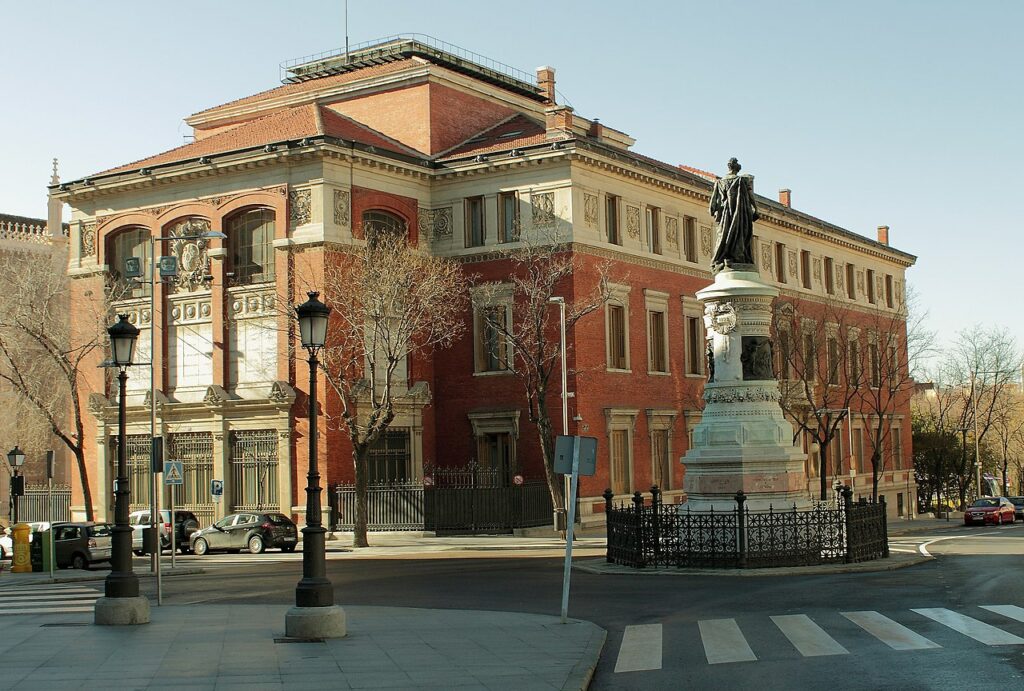
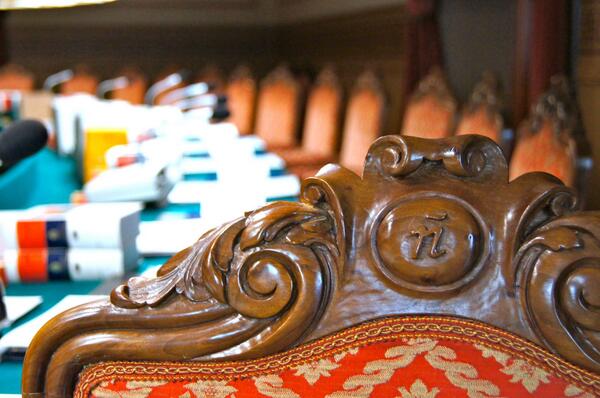

 Since then, I’ve dusted off my virtual pile of leísmo readings to check for anything written about the relationship between verb choice and leísmo. This literature search came up almost dry: research on the semantics and leísmo uniformly refers to the semantic properties of nouns rather than verbs. One property that comes up frequently in the literature is whether an direct object expresses discrete, or countable, items (like cars) or non-countable materials (like sugar). Another, discussed in a 1974 paper by
Since then, I’ve dusted off my virtual pile of leísmo readings to check for anything written about the relationship between verb choice and leísmo. This literature search came up almost dry: research on the semantics and leísmo uniformly refers to the semantic properties of nouns rather than verbs. One property that comes up frequently in the literature is whether an direct object expresses discrete, or countable, items (like cars) or non-countable materials (like sugar). Another, discussed in a 1974 paper by 